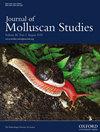A phylogeographic assessment redefines the distributions of Truncilla species (Bivalvia: Unionidae) in Texas
IF 1.2
4区 生物学
Q2 MARINE & FRESHWATER BIOLOGY
引用次数: 0
Abstract
Truncilla macrodon¸ the Texas Fawnsfoot, is currently considered to be restricted to the Brazos and Colorado river drainages in central Texas, USA. Subfossil specimens resembling T. macrodon from shell middens in the Trinity river drainage have raised questions about its presumptive range. Extant Truncilla populations occupying the Trinity river drainage are believed to be Truncilla donaciformis, the Fawnsfoot, but the species identity has not been assessed using molecular techniques. In this study, we set out to use phylogeographic and morphometric approaches to resolve the distribution of Truncilla spp. in Texas, with an emphasis on assessing species identity of Truncilla in the Trinity river drainage. Our molecular analyses indicated individuals from the Trinity river drainage are T. macrodon rather than T. donaciformis, and morphometric analyses using ratios of shell length, width and height supports this finding and showed differentiation among T. macrodon, Truncilla cognata and T. donaciformis. These combined findings suggest the range of T. macrodon is larger than previously recognized and includes the Colorado, Brazos and Trinity river drainages. The status of Truncilla spp. in the San Jacinto river basin remains unclear due to lack of information on historical or extant populations, but we recommend conservationists consider T. macrodon as part of the mussel fauna since the drainage shares an embayment with the Trinity river drainage. Molecular data also indicated the Trinity population of T. macrodon is distinct from, and more genetically diverse than, the Brazos and Colorado populations. This difference suggests the Trinity River population should be treated as a separate management unit from the Brazos and Colorado River populations to facilitate effective conservation and recovery planning. Our study adds to the growing body of literature highlighting the utility of molecular data in conservation and management of freshwater mussels.一种系统地理学评估重新定义了在德克萨斯州的截尾属(双壳亚目:联叶科)的分布
截尾草(Truncilla macrodon),又名德州狐尾草,目前被认为局限于美国德克萨斯州中部的布拉索斯河和科罗拉多河流域。在特里尼特河流域的贝壳丘中发现的类似巨齿龙的亚化石标本对其假定的范围提出了质疑。在Trinity河流域现存的截尾鼠种群被认为是截尾鼠(trunilla donaciformis, Fawnsfoot),但物种身份尚未使用分子技术进行评估。本研究采用系统地理学和形态计量学的方法分析了截断属(Truncilla spp.)在德克萨斯州的分布,重点评估了截断属(Truncilla spp.)在Trinity河流域的物种特征。我们的分子分析表明,来自Trinity河流域的个体是巨齿龙而不是donaciformis,使用壳长、宽、高比的形态计量学分析支持了这一发现,并显示了巨齿龙、同源截尾和donaciformis之间的差异。这些综合发现表明,巨齿鲨的分布范围比之前认识到的要大,包括科罗拉多河、布拉索斯河和三一河流域。由于缺乏历史或现存种群的信息,在圣哈辛托河流域的Truncilla spp.的状况仍然不清楚,但我们建议保护主义者将T. macrodon视为贻贝动物群的一部分,因为排水系统与Trinity河排水系统共享一个海湾。分子数据还表明,三位一体的巨齿鲨种群与布拉索斯和科罗拉多的种群不同,而且遗传多样性更高。这种差异表明,三一河种群应该与布拉索斯河和科罗拉多河种群分开管理,以促进有效的保护和恢复计划。我们的研究增加了越来越多的文献,强调了分子数据在淡水贻贝保护和管理中的效用。
本文章由计算机程序翻译,如有差异,请以英文原文为准。
求助全文
约1分钟内获得全文
求助全文
来源期刊

Journal of Molluscan Studies
生物-动物学
CiteScore
3.00
自引率
8.30%
发文量
36
审稿时长
3 months
期刊介绍:
The Journal of Molluscan Studies accepts papers on all aspects of the study of molluscs. These include systematics, molecular genetics, palaeontology, ecology, evolution, and physiology. Where the topic is in a specialized field (e.g. parasitology, neurobiology, biochemistry, molecular biology), submissions will still be accepted as long as the mollusc is the principal focus of the study, and not incidental or simply a convenient experimental animal. Papers with a focus on fisheries biology, aquaculture, and control of molluscan pests will be accepted only if they include significant advances in molluscan biology. While systematic papers are encouraged, descriptions of single new taxa will only be considered if they include some ‘added value’, for example in the form of new information on anatomy or distribution, or if they are presented in the context of a systematic revision or phylogenetic analysis of the group.
 求助内容:
求助内容: 应助结果提醒方式:
应助结果提醒方式:


